We’ve seen the release of the next RTX series, and we’re about to get the next RDNA installment, as well. So, it’s a great time to revisit and consider purchasing something from the previous generations because prices are dropping fast. In this 6700 XT vs 3060 comparison, I’ll walk you through how the RX 6700 XT compares to the RTX 3060, with a quick mention of the RTX 3060 Ti.
6700 XT vs 3060 – Quick Comparison
| RX 6700 XT | Specs | RTX 3060 |
|---|---|---|
| Navi 22 XT (215-127000006) | GPU | GA106-300-A1 GA106-302 (LHR) GA104-150-A1 |
| PCIe 4.0 x16 | Interface | PCIe 4.0 x16 |
| 2,560 (Stream Processors) | Cores | 3,584 (CUDA Cores) |
| N/A | Tensor Cores | 112 |
| 160 | TMUs | 112 |
| 40 | RT Cores | 28 |
| 2,321 MHz | Base Clock (Founders Edition) | 1,320 MHz |
| 2,581 MHz | Boost Clock (Founders Edition) | 1,777 MHz |
| 12 GB GDDR6 | Memory | 12 GB GDDR6 8GB GDDR6 |
| 2,000 MHz (16 Gbps effective) | Memory Speed | 1,875 MHz (15 Gbps effective) |
| 384.9 GB/s | Bandwidth | 360.0 GB/s 240.0 GB/s |
| 192-bit | Memory Bus | 192-bit 128-bit |
| 230 W | TDP (Founders Edition) | 170 W |
| 550 W | Required PSU (Founders Edition) | 450 W |
| 74℃ (165.2℉) | Max Recorded Temp (Founder Edition) | 77℃ (170.6℉) |
| 51dB | Max Fan Noise (Founders Edition) | 46dB |
| 1x HDMI 2.1 3x DisplayPort 1.4a | Outputs (Founders Edition) | 1x HDMI 2.1 3x DisplayPort 1.4a |
AMD RX 6700 XT
AMD released the high-end Radeon RX 6700 XT in March 2021. Its 2,560 cores were clocked at 2,321 – 2,581 MHz in the Founders Edition (FE). Its 12 GB VRAM clocked at 2,000 MHz. It delivers impressive performance overall, beating the RTX 3060 by 19% according to user EFps tests.
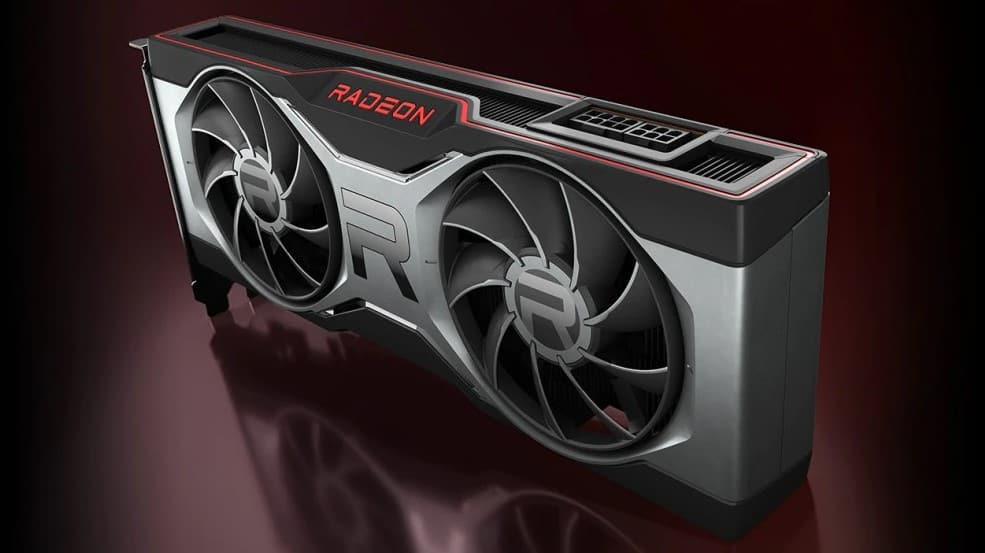
AMD is renowned for its CPUs and motherboard chipsets, yet it has often struggled with its GPUs, sometimes not aiming for high-end offerings at all. RDNA changed that, and the RX 6000 series, based on RDNA 2, more than made up for all the previous missing high-end segments.
Pros:
- Better performance
- Higher clock speeds
- Faster VRAM
- Creates less heat
Cons:
- Louder
- More expensive (on average)
Nvidia RTX 3060
Nvidia released the mid-range GeForce RTX 3060 based on the GA106 GPU in February 2021. It later released a second, Lite Hash Rate (LHR) version based on the same GPU. Every RTX 3060 version had 3,584 CUDA Cores which are clocked at 1,302-1,777 MHz in the Founders Edition. The 3060 features a 12 GB VRAM clocked at a lower frequency (1,875 MHz) than the 6700 XT’s VRAM.
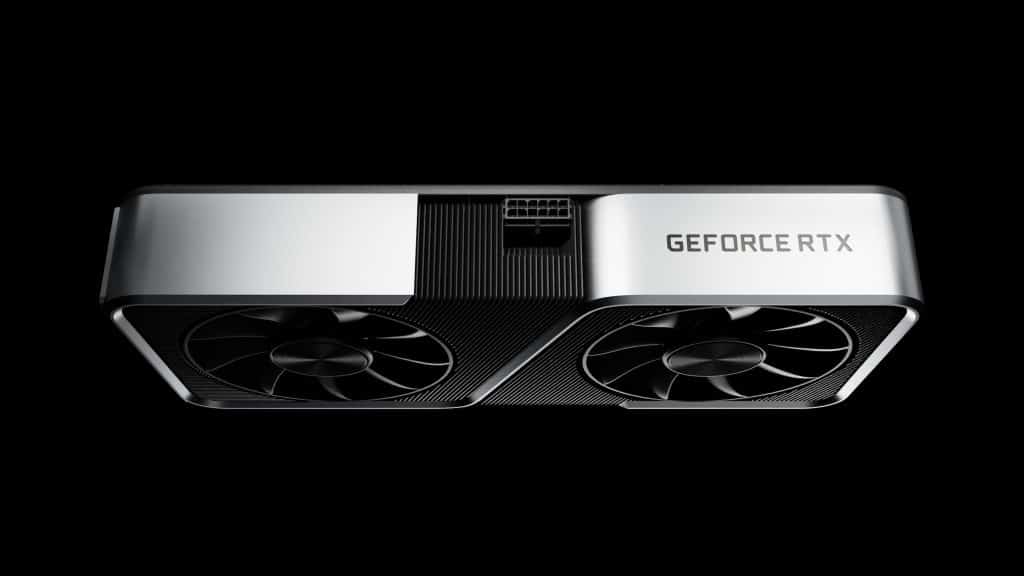
Nvidia released the third RTX 3060 variant in September 2021 based on the GA104 GPU. The GA104 was also used in the RTX 3060 Ti. It features a larger die size with over four billion more transistors.
One third-party manufacturer (so far) has just released (October 25th, 2022) an 8 GB version of the 3060 based on the GA104 GPU. Modifications in VRAM configuration are the only changes in specs compared to the 12 GB version. The rest of its configuration is unaltered, but performance will certainly take a hit.
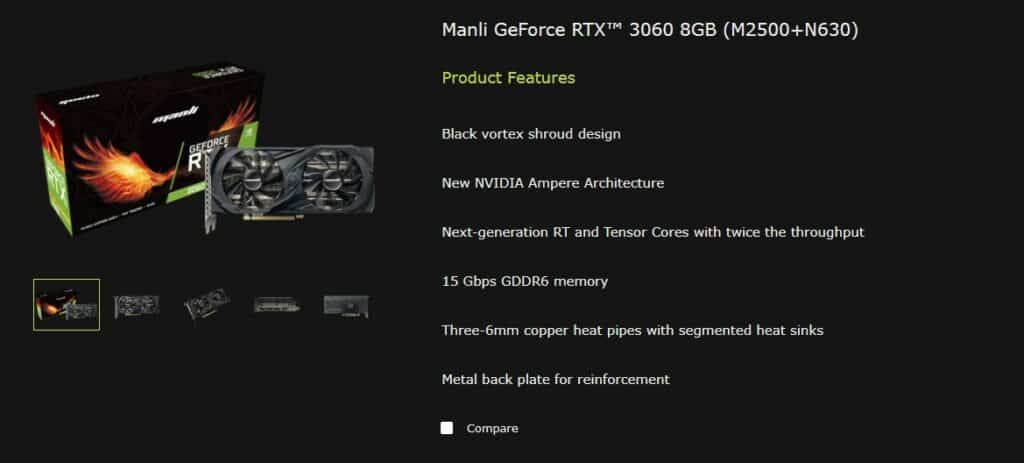
Nvidia started less than 30 years ago. After developing the first-ever GPU, the company has empowered us with the ability to enjoy better gaming with every generational release. Nvidia shifted its primary focus away from gaming and is now developing GPUs for AI and machine learning research projects. The RTX series is somewhat of a byproduct of that shift.
Pros:
- More cores
- Lower TDP
- Less expensive (on average)
- Tensor Cores
Cons:
- Falls short in performance
- Slower VRAM
RX 6700 XT vs RTX 3060 – Key Specifications
Architecture
RDNA 2
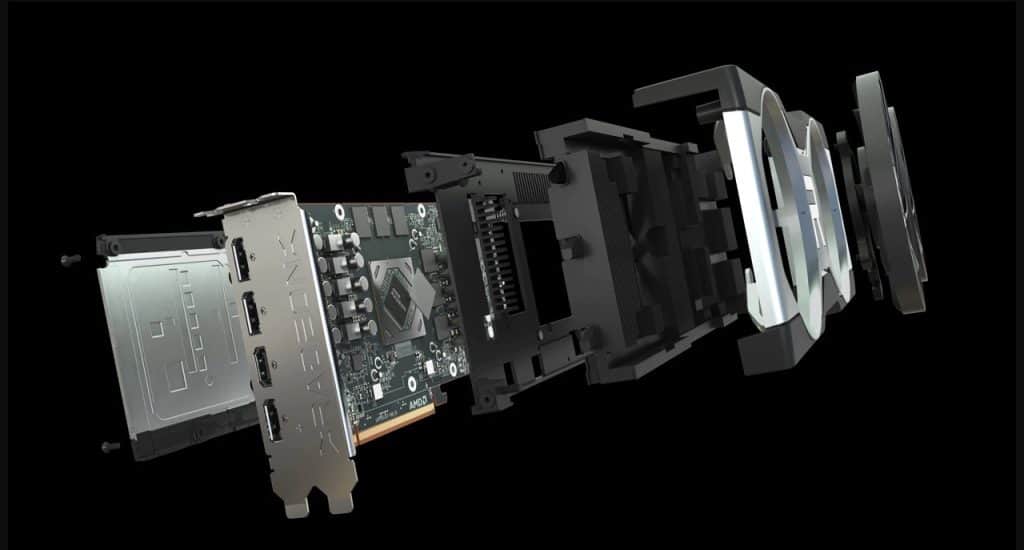
RDNA 2 was explicitly designed with gaming in mind. That’s why it’s present in gaming consoles such as the PS5 and XBOX Series S and X. It was advertised as delivering 65% more performance-per-Watt by AMD. In addition, it introduced a Resizable BAR (Smart Access Memory) and AMD Infinity Cache. We’re yet to see the release of RDNA 3, and we won’t have to wait long. It’s scheduled for November 2022.
Ampere
Ampere was designed with much more than gaming in mind. It was the fastest GPU microarchitecture until Nvidia released Ada Lovelace recently (see our RTX 4080 vs RTX 3080 comparison HERE). It featured second-generation RT Cores, third-generation Tensor Cores, a Resizable BAR (without a fancy name), and built-in streaming capabilities tailored for content creators.
Winner: RTX 3060
Also Read: The Difference between GTX and RTX series cards
Design and Build
Both the RX 6700 XT and the RTX 3060 are typically dual-slot cards. There are quite a few third-party variants of both that are triple-slot cards, so make sure you have enough room for them in your PC case. Triple-slot cards are usually among the top performers because they have larger cooling configurations that allow for higher boost clock speeds. I’m betting one of them will be on your list of choices.
Winner: RTX 3060
Clock Speeds & Overclocking
You’ve probably heard the term “clock speeds” when people talk about certain PC components, including GPUs. CPUs, RAM, and VRAM all have clock speeds. But what are they? They’re the operating frequency of a specific component that determines how fast it is (to keep it simple). Clock speeds used to be static, and people had to resort to overclocking to achieve higher speeds and better performance.
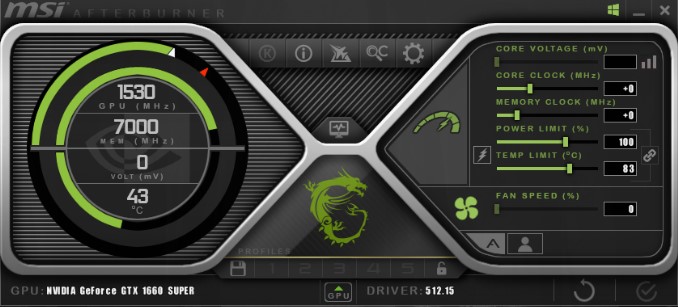
Manually manipulating the settings of your GPU is called overclocking. This includes changing the core clock, VRAM clock, voltage, and fan speeds. You can do this using dedicated software from Nvidia, AMD, or third-party manufacturers such as MSI Afterburner — here’s our detailed guide on using it!
Today’s GPUs have dynamic clock speeds, meaning they will change according to load. For example, a 15-year-old game won’t need the full power of your one-year-old card, so you’ll see only a fraction of the base clock speed being used while playing it. On the other hand, if the game you’re playing requires more power, your card will easily jump beyond the official boost clock until it overheats.
The base clock speed of the RX 6700 XT FE is 2,321 MHz, and it will boost to 2,581 MHz or above. The base clock speed of the RTX 3060 is 1,320 MHz, and it will boost to 1,777 MHz and above. Most third-party variants come factory-overclocked and feature boost clock speeds above these. AMD offers a third clock speed known as “game clock,” but that’s just the average you should expect during gaming.
See Also: Our Recommendations of Best CPUs for RTX 3060
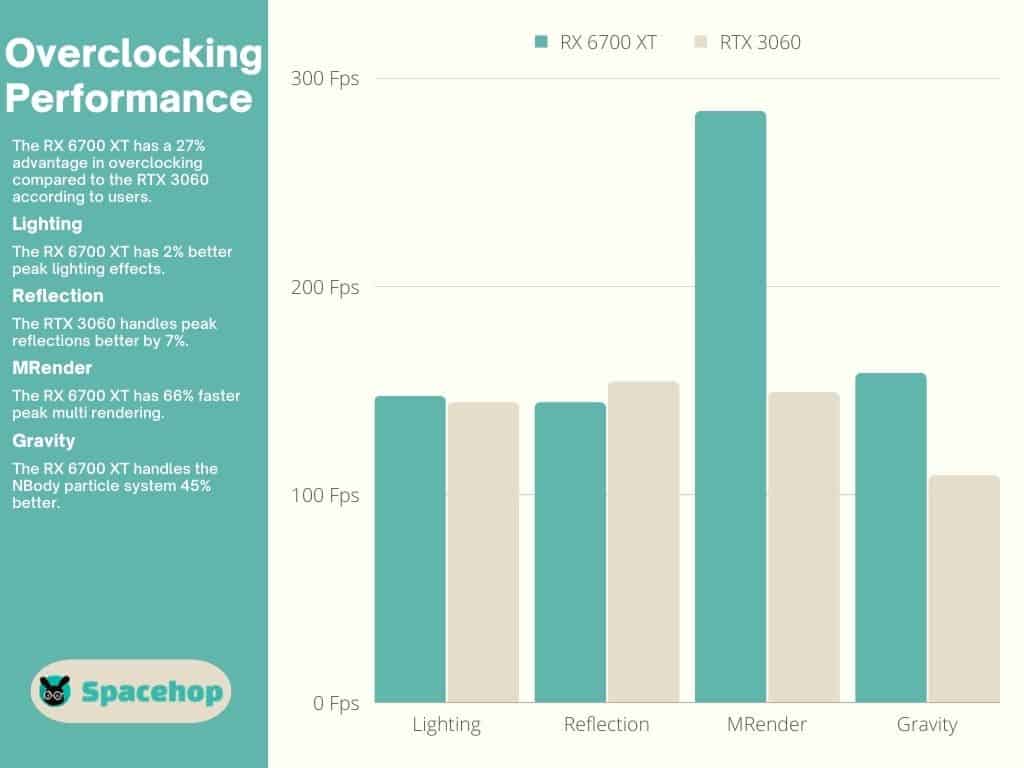
On average, the RX 6700 XT beats the RTX 3060 in performance, according to user or benchmark tests. The differences are smaller in certain segments when both cards are overclocked. Below you’ll find the top five factory-overclocked third-party versions of each card.
| Best RX 6700 XT Variants | Boost Clock | Best RTX 3060 Variants | Boost Clock |
|---|---|---|---|
| ASUS ROG STRIX RX 6700 XT GAMING OC (triple-slot) | 2,629 MHz | ZOTAC RTX 3060 PGF XGOC (triple-slot) | 1,897 MHz |
| ASRock RX 6700 XT Phantom Gaming D OC (triple-slot) | 2,622 MHz | ASUS ROG STRIX RTX 3060 GAMING OC (triple-slot) | 1,882 MHz |
| ASUS TUF RX 6700 XT GAMING OC (triple-slot) | 2,622 MHz | ASUS ROG STRIX RTX 3060 V2 GAMING OC (triple-slot) | 1,882 MHz |
| Dataland RX 6700 XT God of War (dual-slot) | 2,622 MHz | EVGA RTX 3060 XC LHR (dual-slot) | 1,882 MHz |
| GIGABYTE AORUS RX 6700 XT ELITE (triple-slot) | 2,622 MHz | Colorful iGame RTX 3060 Advanced OC (triple-slot) | 1,867 MHz |
Winner: RX 6700 XT
Cores
A Graphics Processing Unit (GPU) is a parallel processor with thousands of cores. The RX 6700 XT has 2,560 cores called Stream Processors. The RTX 3060 has 3,584 cores called CUDA Cores. While the latter has more cores, its slower clock speeds even out the playing field. Nevertheless, counting them and considering clock speeds isn’t all that’s to it. Shaders are also important.
Shaders
Shaders are generic programming languages that utilize the cores in a GPU to produce the virtual world we enjoy in games. DirectX is a perfect example of a shading language. Both cards feature DirectX 12 Ultimate, meaning they have the latest support for any graphics requirements presented by an AAA game and support for hardware-based ray tracing.
| RX 6700 XT | Shading Language | RTX 3060 |
|---|---|---|
| 12 Ultimate (12_2) | DirectX | 12 Ultimate (12_2) |
| 4.6 | OpenGL | 4.6 |
| 2.1 | OpenCL | 3.0 |
| 1.3 | Vulkan | 1.3 |
| N/A | CUDA | 8.6 |
| 6.5 | Shader Model | 6.6 |
The RTX 3060 uses newer versions of some shading languages, which is one of the reasons it can compete with the RX 6700 XT, and why the RTX 30 series is more popular than the RX 6000 series.
Ray Tracing
Another example of a shading language is DirectX Raytracing. It was rolled out in 2020 along with Nvidia’s first RTX microarchitecture, Turing. Before that, ray tracing didn’t exist in games, only in CGI movies. It replicates the behavior of real-world light particles in virtual worlds. Nvidia is on its second generation of Ray Tracing Cores in the 3060.
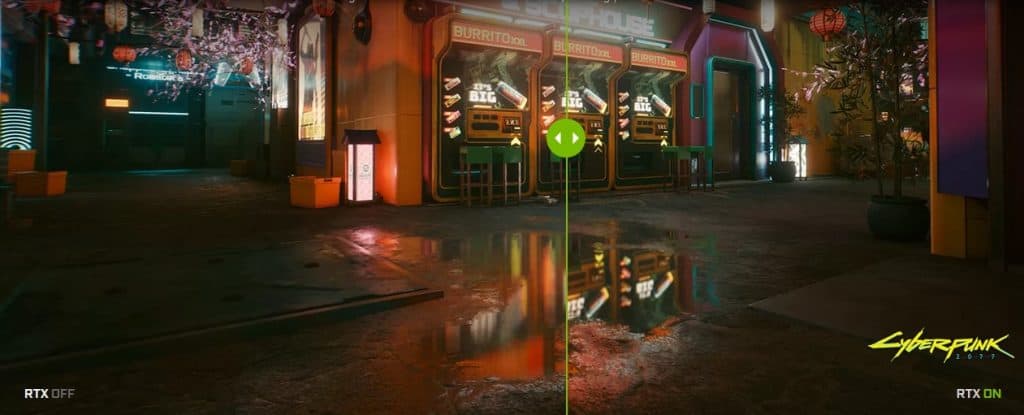
AMD got into ray tracing with RDNA 2 and did not designate cores dedicated only to ray tracing, as did Nvidia. Instead, AMD allocates part of its GPU compute units to ray tracing whenever it’s activated. That means the RTX 30 series delivers better ray tracing performance than the RX 6000 series on average (tier to tier).
While nice, ray tracing is not essential to gaming, and not many titles have the feature at all. Textures are essential in every 3D environment, new or old. Textures are handled by Texture Mapping Units, and the more TMUs you have, the better.
TMUs
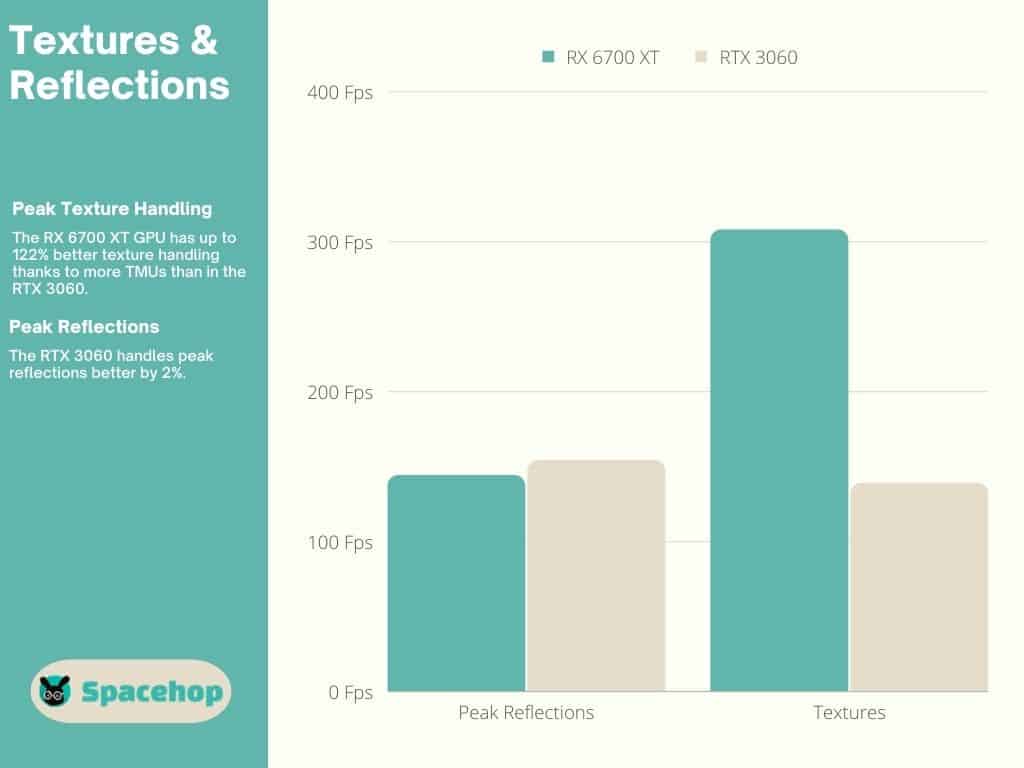
Texture Mapping Units (TMUs) are part of a GPU’s core configuration. GPUs used to have equal numbers of cores, ROPs, SMs, TMUs, etc., but these components have been decoupled, allowing for more main cores and better performance. The RX 6700 XT has 160 TMUs, while the RTX 3060 has 112. This results in a massive 122% advantage in texture handling.
Winner: RTX 3060
VRAM & Memory Specs
The RX 6700 XT and the RTX 3060 have a 12 GB VRAM paired with a 192-bit memory BUS. The 6700 XT has a VRAM clock of 2,000 MHz delivering an effective speed of 16 Gbps and a bandwidth of 384.0 GB/s. The RTX 3060 has a VRAM clock of 1,875 MHz delivering an effective speed of 15 Gbps and a bandwidth of 360.0 GB/s.
The RTX 3060 now has a new version with an 8 GB VRAM configuration as of last week. It’s paired with a 128-bit BUS, delivering a bandwidth of 240.0 GB/s and an effective speed of 15 Gbps.
Winner: RX 6700 XT
Also Read: The Key Differences between VRAM vs RAM
Performance
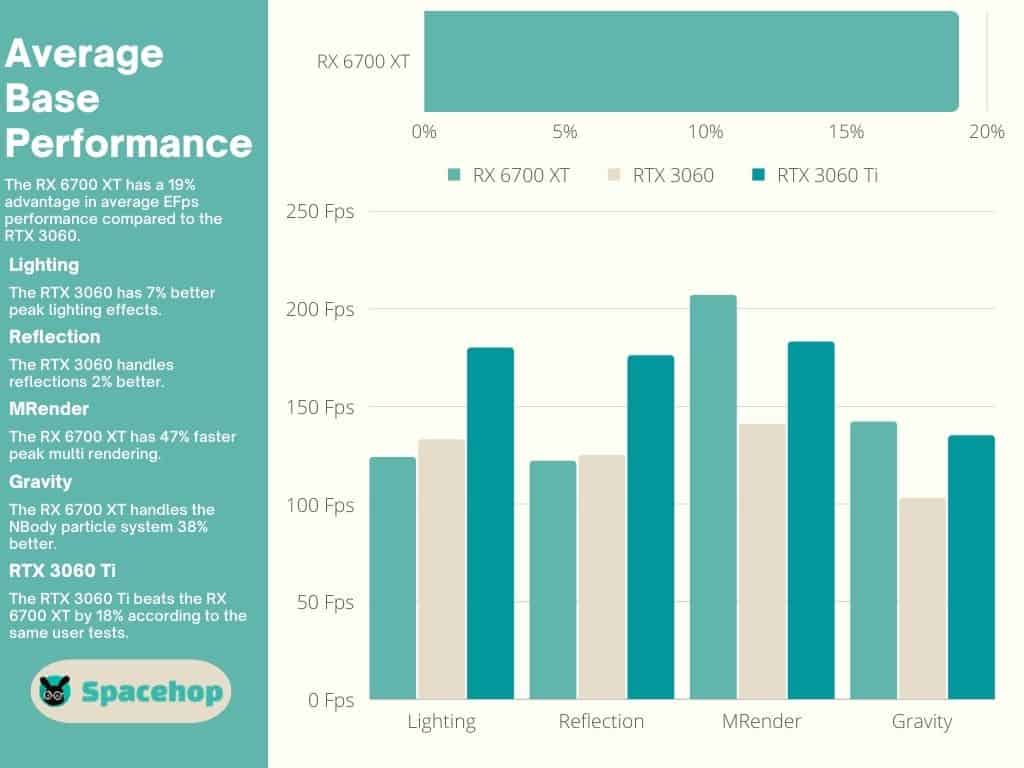
I’ve decided to compare the RTX 3060 Ti in one of my performance graphs for this RX 6700 XT vs RTX 3060 comparison, so you get an idea of how they all compare. User tests result in a 19% EFps advantage for the RX 6700 XT compared to the RTX 3060. The RTX 3060 Ti beats the 6700 XT by another 18%, according to those same tests.
Related: See our detailed comparison of the 6700 XT and the 3060 Ti.
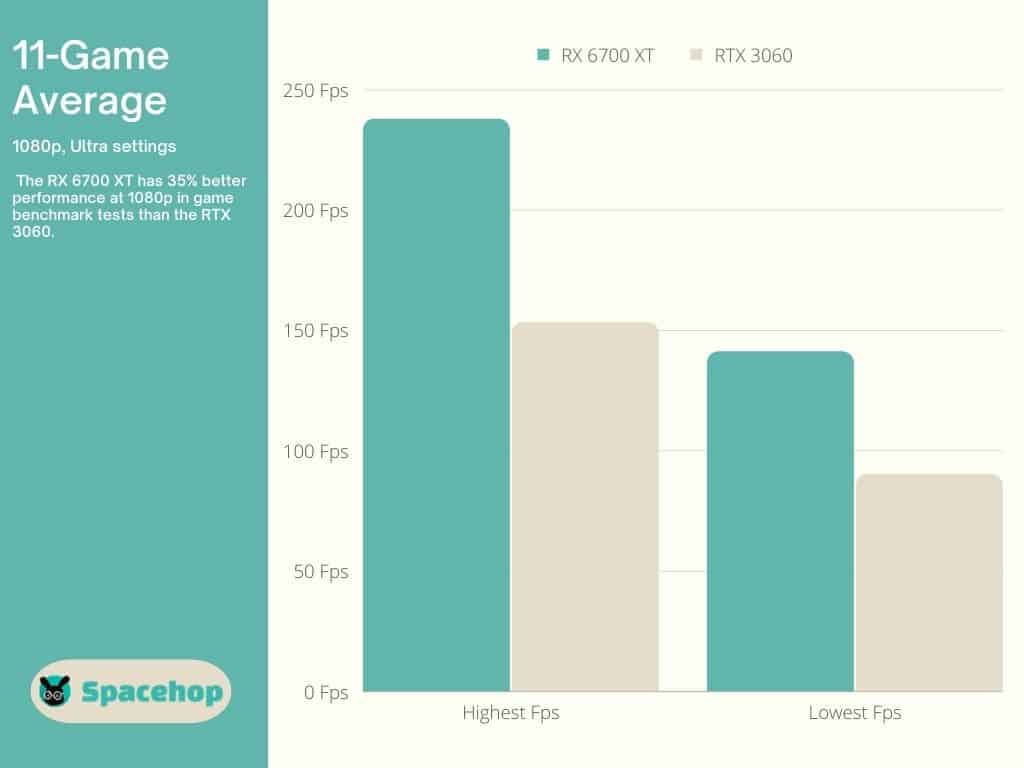
Game benchmark tests tell a different story, though I always trust users more (you know, real-world conditions and all that). At 1080p and everything set to max, the RX 6700 XT outperforms the RTX 3060 by 35%.
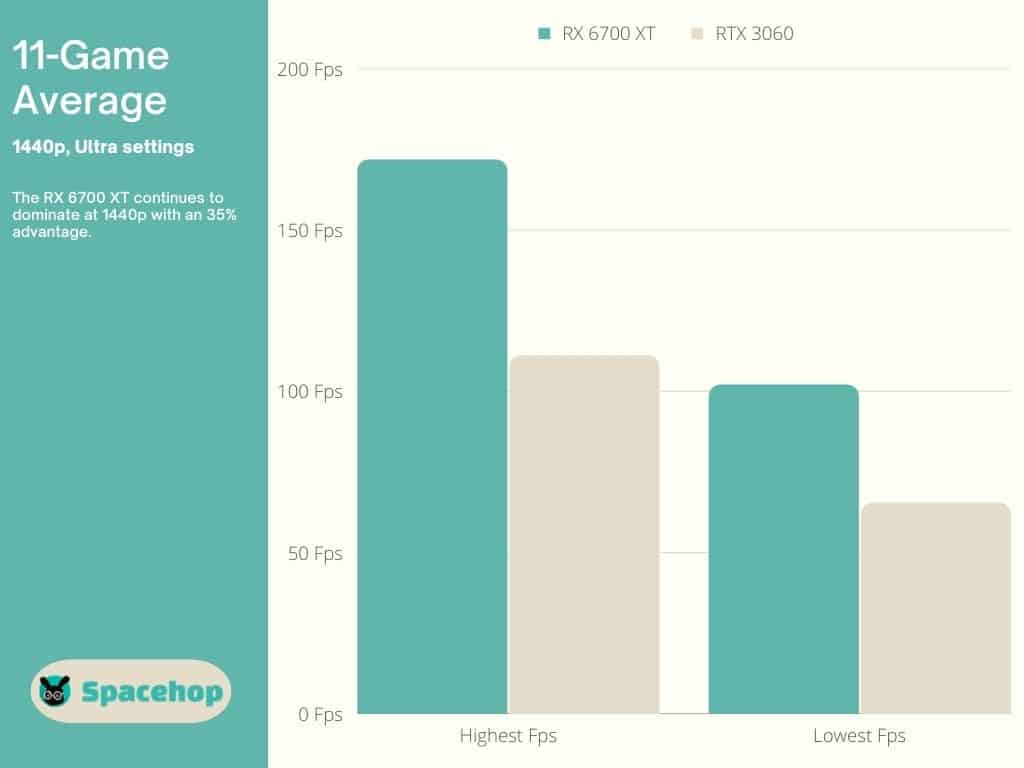
The RX 6700 XT continues to dominate at 1440p, dropping its advantage from 35.7% to 35.5%.
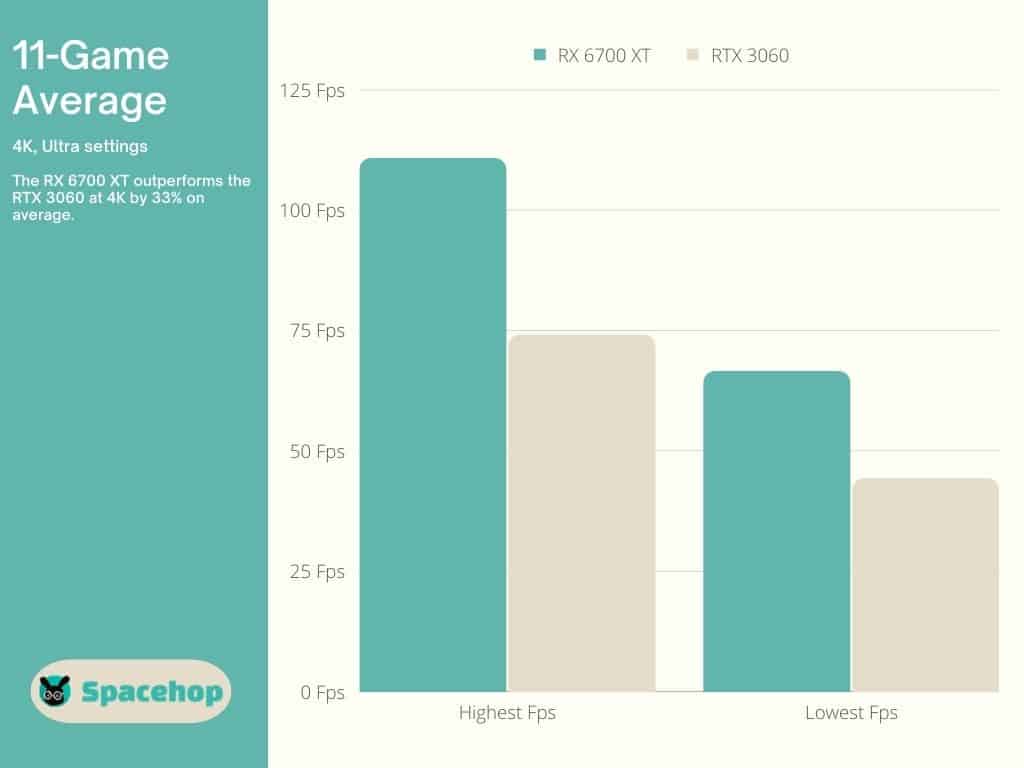
The 6700 XT’s advantage decreases slightly at 4K, where we see a 33% advantage.
Winner: RX 6700 XT
Also Read: 4K and 1080p Explained — What’s the difference?
Connectivity
Both cards offer the same connection options. They both support HDMI 2.1 and 1.4a DisplayPorts. The Founders Editions each have one HDMI port and three DisplayPorts. That configuration is mirrored in most third-party variants as well.
| RX 6700 XT Output Type | Supported Resolution | RTX 3060 Output Type | Supported Resolution |
|---|---|---|---|
| HDMI 2.1 | 4K at 120Hz, 8K at 60Hz | HDMI 2.1 | 4K at 120Hz, 8K at 60Hz |
| DisplayPort 1.4a | 4K at 120Hz, 8K at 60Hz | DisplayPort 1.4a | 4K at 120Hz, 8K at 60Hz |
Winner: Draw
TDP
TDP can mean several things; Thermal Design Power — how much power a subsystem is allowed to draw from your PSU; Thermal Design Point — how much heat that subsystem is allowed to produce under load. AMD tends to use TBP (total board power), and Nvidia uses TGP (total graphics power), but they’re basically the same thing.
Be it TDP, TGP, or TBP, we know the specifics here. The RX 6700 XT requires a 550 W PSU to handle its 230 W TDP. The RTX 3060 requires a 450 W PSU to power its 170 W TDP. That’s talking power. When considering temperatures and heat, the 3060 FE runs slightly hotter under load, hitting 77℃ (170.6°F). The 6700 XT reached only 74℃ (165.2°F).
Winner: RTX 3060
6700 XT vs 3060: -Standout Features
Nvidia Tensor Cores
Tensor Cores are one of those byproducts I mentioned that came about from Nvidia’s shift toward powering AI projects. They were designed for AI development but play an important role if you’re using them for gaming. They deliver a massive boost in performance thanks to Nvidia DLSS and help speed up screen projection.
Pricing & Availability
The 6700 XT launched at a $479 MSRP. Since then, prices skyrocketed but are now dying down. The RTX 3060 launched at $329 but also saw an unbelievable price hike.
You can now find RX 6700 XTs from a multitude of third-party manufacturers. The top-performing ASUS TUF variant is priced at 38% above MSRP. If that seems like a lot, this PowerColor Fighter variant is priced at 16% below MSRP. The middle ground would be another PowerColor Red Devil variant priced at 10% below.
The RTX 3060 is less expensive though still significantly above its own MSRP, on average. The ASUS ROG Strix variant (No. 2 on our list) is priced at 72% above MSRP. A ZOTAC Gaming variant is available at 18% above. Another option could be an MSI Gaming variant, priced at 15% above MSRP.
Prices listed here are at the time of writing this article.
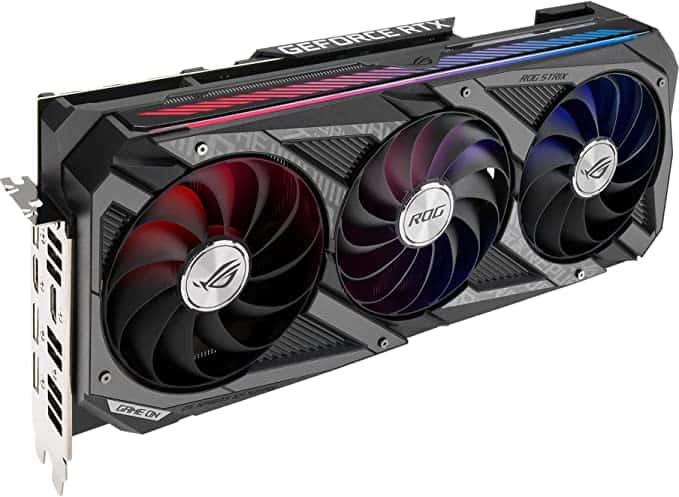
In comparison, the RTX 3060 Ti beats both cards in performance, so it’s worth mentioning its price as well. It was launched for $399. You can grab the No.1 top-performing ASUS ROG Strix RTX 3060 Ti OC Gaming Edition at 42% above its MSRP. That’s roughly the price of the 6700 XT and 3060 top performers, but you’ll get 18% better EFps performance than the 6700 XT and 37% better than the RTX 3060.
Conclusion
To conclude, the RX 6700 XT is definitely the better card in this RX 6700 XT vs RTX 3060 comparison. It wins in the most important segments of this article and performance (as if that’s not enough). Would I buy it? Probably not. Most people have negative comments about AMD GPUs. If it were me, I’d buy the RTX 3060 Ti (see our comparison of it HERE) and be done with it.